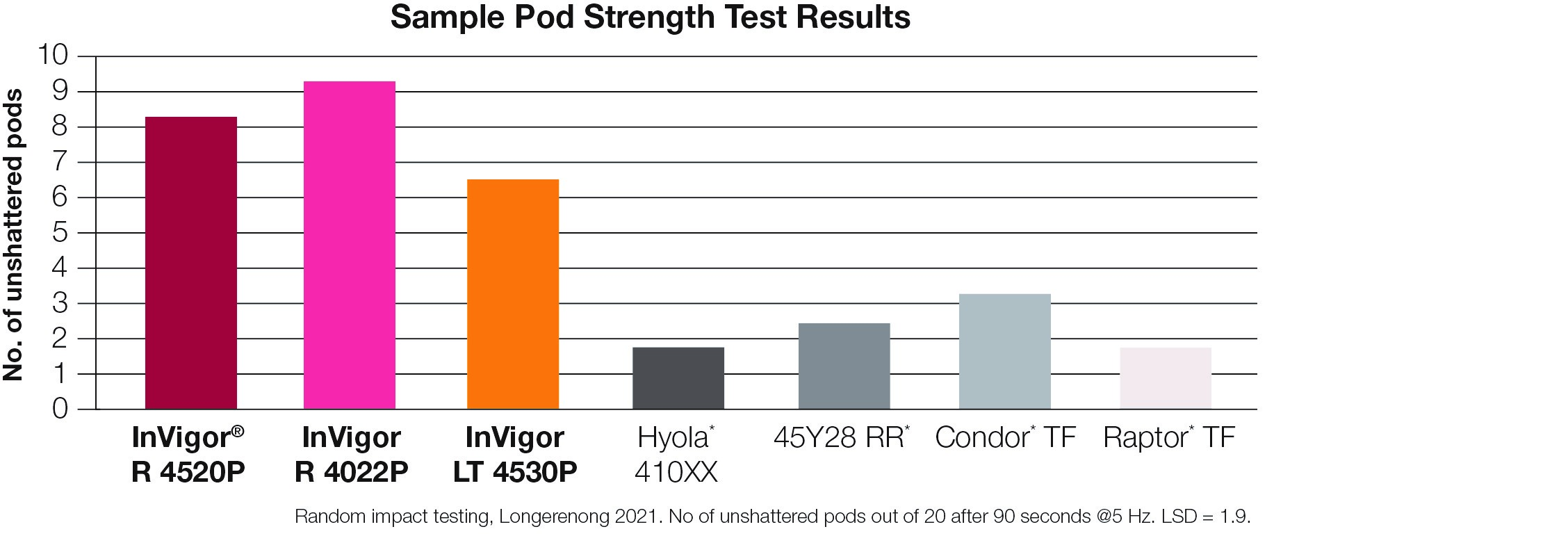Canola varieties are routinely compared on the basis of trial results that measure a whole range of characteristics from their grain yield and oil content to flowering timings and average height.
One key characteristic that hasn’t traditionally been scientifically measured is pod strength: the durability and shatter-resistance of the variety’s mature pods.
Because harvesting canola is largely about risk management, the resilience of the crop’s mature pods is an important consideration. There’s usually been a trade-off between trying to harvest high yields without allowing the crop to fully mature, because every extra day it’s left standing increases multiple risks: that pods will be shattered by wind or hail and that they will be so fragile a much larger amount of seed than usual is lost as they are windrowed or harvested.
With those risks in mind, growers generally accept that they will sacrifice a fair bit of potential yield to protect themselves against the possibility of considerable losses.
If growers can factor in exceptionally durable pods, the whole balance shifts in their favour. They can confidently leave canola standing longer and reap a range of potential benefits:
• Higher yields because the whole paddock has reached 100% maturity and maximum pod-fill.
• Minimal shattering losses if the weather gets hot and windy or a storm hits.
• Reduced mechanical seed loss as the crop is windrowed or harvested.
• Cost savings because they opt for directheading and/or don’t need to spray the crop with a sealant.
• The opportunity to harvest more time-critical crops first and maximise the return on them as well as their canola.
The relative resilience of different canola varieties, and the value of sealant sprays, has been the subject of research for years.
However there has not been an objective system of comparing the pod strength of varieties. Now BASF have developed a testing protocol that allows the first objective comparisons to be made.

Each random impact test bounces 20 ripe pods against ball bearings in a container vibrating at 5 hertz for 90 seconds. Multiple tests are conducted for each variety to ensure statistical integrity.
Each variety earns a score out of 20 based on the average number of pods that remain undamaged across the repeated tests.
The results so far have confirmed scientific logic and previous observations: BASF’s InVigor® varieties with the PodGuard® trait are far more resilient than varieties without that genetic advantage.
“PodGuard is a genetic trait that is used to strengthen the dehiscence zone of canola pods, which is the seam of the pod that typically splits to cause shattering,” explains David Pike, the Canola Breeder at BASF.
“The trait has been developed to strike the right balance between pod strength and harvestability, so we knew PodGuard varieties would have stronger pods than other varieties.” David says he hopes an immediate benefit of the testing will be that farmers growing PodGuard varieties will gain extra confidence in direct-heading or windrowing later.
“The latest research finding from a collaborative project between NSW DPI, CSIRO and GRDC has demonstrated that yield and oil is optimised when windrowing is conducted between 60 and 80% colour change,” he says. “We hope our customers will take advantage of their opportunities with PodGuard varieties by choosing to direct-head or wait that little bit longer to windrow when crops have reached full maturity across the paddock.”
